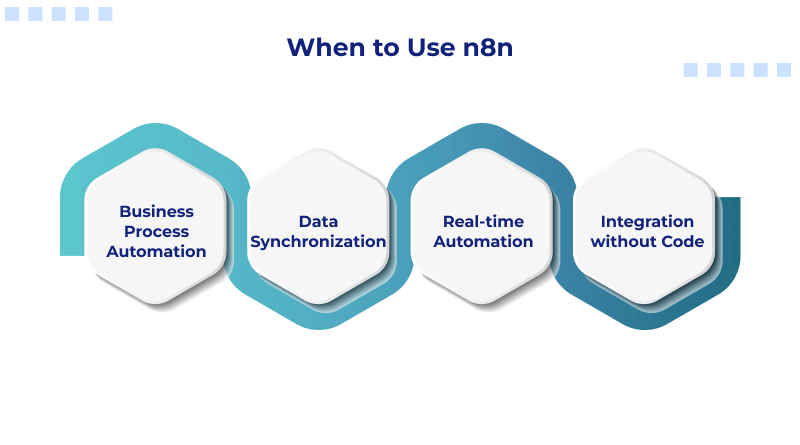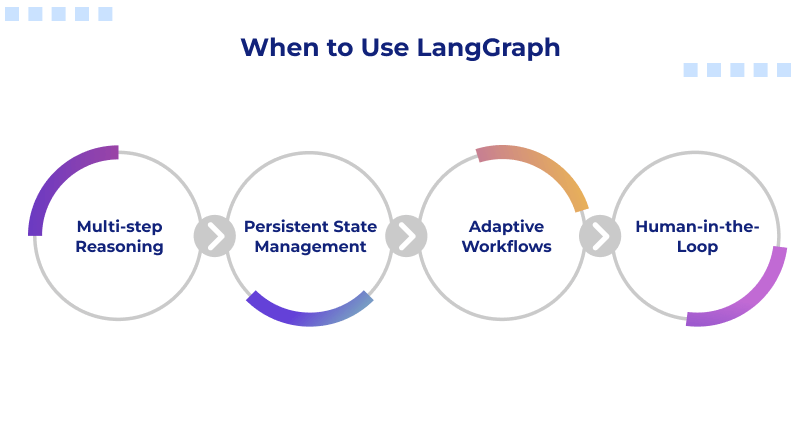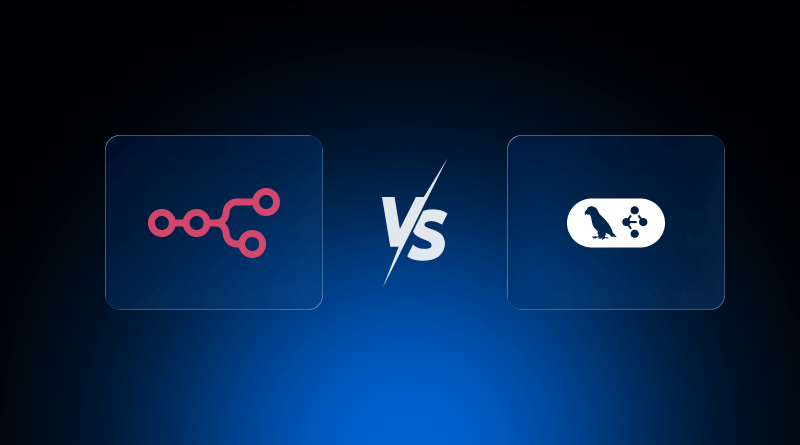Creation of content is time-consuming. However, with the right tools, it is not as hard. n8n and LangGraph are two significant tools that can be used to automate and improve content workflows. n8n has an easy, no-code interface that is quite intuitive for building a workflow on n8n VPS. LangGraph can be used by developers who develop logics with the help of LLMs. All tools possess peculiar advantages, and they are goal-dependent.
This blog will explain the features of both tools for creating content on social media platforms like LinkedIn. We will also compare them and help you decide which tool to use and when.
Table Of Content
What is n8n?
N8n is an open-source workflow automation tool that simplifies the integration of several applications and automates agent-based workflows with ease. Unlike other automation tools, n8n offers flexibility with self web hosting, eliminating vendor lock-in.
As a no-code/low-code platform, it enables even non-developers to create automation pipelines with great power and minimal effort. The ability of n8n to utilize AI is one of its strong points. It can be easily connected with APIs as OpenAI, Gemini, and Claude to generate dynamic content. Furthermore, n8n offers AI generators and ready templates to create an AI agent fast, automate business processes, and make them much more scalable and efficient for both businesses and creators. The same feature is available in our AI website builder.
N8n Features
With the array of n8n features, these are powerful attributes of this automation workflow tool.
1. Node-Based System
n8n is a node-based visual editor in which every node is a specific action, trigger, or data transformation. Nodes serve as access points for data retrieval, processing data entry points, or exit points for sending data. This graphic user interface enables the creation of workflows by connecting nodes and specifying the flow of data.
2. Ready-to-Use
Integrations: n8n offers an extensive list of pre-built nodes for connecting to popular apps, services, and databases. It supports over 400 integrations with various apps.
3. Nodes configured Customization
n8n enables users to build custom nodes to support complex applications. The nodes can be configured to perform complex data operations or communicate with non-native APIs.
4. Error Handling
n8n also has error handling and logging facilities. It also provides smooth handling of unexpected problems in the workflows. Users can resolve workflow failures and execution issues using detailed logs.
5. Collaboration Features
n8n integrates with various features, enabling teams to collaborate on managing and building workflows. These features include version control, access control, and the ability to share workflows with team members.
What is LangGraph?
LanGraph is an open source library based on Python, created by LangChain, to manage stateful and complex AI agent workflows, with a graph-based architecture. It lets developers build workflows using connected steps (nodes and edges) with logic, loops, and memory, so they can create complex, multi-step agents that adapt and remember over time. It spans from basic chatbots to advanced multi-agent systems.
Key Features of LangGraph
1. Complex Workflow Cyclic Graphs
Unlike DAG (Directed Acyclic Graph) solutions, LangGraph enables the creation of cyclical graphs, where loops and repetitive interactions, that are necessary for agentic architectures, can be created.
2. State Management
It provides extensive state control, serving as a memory bank that stores and monitors information throughout the work process. It enables stateful actors, where applications can pause and resume work without losing state. Human-in-the-Loop (HITL) Control
LangGraph facilitates human intervention at any point in the workflow. It allows for asynchronous approval, correction, or guidance by pausing execution to await human feedback.
3. Streaming Support
The LangGraph does the real-time streaming of agent state, token models, and tool outputs. It offers users clear visibility into the agent’s reasoning and actions as they unfold.
4. Connection with LangChain Ecosystem
LangGraph is an open-source project based on LangChain and incorporating LangSmith, with test, debug, and production functionality.
5. Extensible Primitives and Low-Level Primitives
It offers low-level and flexible primitives to developers to create their own agents, without forcing high-level abstractions, and provides control over agent logic and communication protocols.
Key Differences: n8n vs LangGraph
| Feature | n8n | LangGraph |
| Primary Use Case | Business process automation and integration at a general purpose. | Creating stateful, multi-agent AI and multi-agent systems. |
| Development Style | Low-code/No-code with a visual, drag-and-drop interface. | Code-first using Python (a library within the LangChain ecosystem). |
| Target User | Non-technical users, business analysts, and developers seeking speed. | Developers and machine learning engineers who need full control. |
| Workflow Logic | Primarily linear or branched. Focus on sequential data flow. | Designed for complex, cyclical, and multi-agent logic (loops, dynamic routing). |
| State/Memory | Manages data passing between nodes. Limited inherent statefulness. | Built-in state management for agents to remember and maintain context over time. |
| AI Integration | Connects to AI models via API nodes. Offers ready-made templates of AI agents. | The fundamental system is meant to be used by AI agents and their coordination. |
| Best For | Quick prototyping, automating repetitive tasks, and connecting various APIs. | Building sophisticated chatbots, reasoning agents, and human-in-the-loop systems. |
When to Use n8n

- Business Process Automation: Automate repetitive manual tasks across multiple apps like collecting leads, sending notifications, and logging data.
- Data Synchronization: Keep data consistent and up-to-date across various platforms automatically.
- Real-time Automation: Trigger workflows instantly based on events like receiving an email or an API call.
- Integration without Code: Connect different systems and move data visually without writing complex code.
When to Use LangGraph

- Multi-step Reasoning: LangGraph is suitable for AI applications looking for a structured, multi-step reasoning with the decision making and branching capabilities.
- Persistent State Management: Maintains memory across steps, allowing long-running workflows where previous decisions influence subsequent ones.
- Adaptive Workflows: Enables AI to choose different actions based on conditions, making it suitable for troubleshooting or guided decision-making.
- Human-in-the-Loop: Allows for human review and approval checkpoints in the workflow, crucial for regulated industries.
Ultimately, n8n or LangGraph is superior, depending on your business objectives and technical requirements, and will be the best solution due to n8n’s role as a low-code workflow automation tool with a strong emphasis on integrations, flexibility, and scalability across industries. It is perfect when the team needs a graphical interface to integrate several applications and process automation without going into the depths of code-intensive solutions.
LangGraph, on the other hand, is designed specifically for use in AI-driven processes, making it a solid option for organizations that wish to create, experiment with, and optimize language model software in a graph-based structure. n8n is a more sensible option if you are focused on general automation and want to integrate different apps. But when you need to develop multifaceted AI agent processes with explicit control over the organization of the LLM, LangGraph can provide more value.
FAQs
1. How does the visual workflow builder in n8n compare to LangGraph’s programmatic approach?
The visual builder is a low-code tool that enables non-technical users to quickly automate tasks with n8n. In contrast, LangGraph provides developers with a programmatic interface to gain finer control over complex and custom AI applications.
2. Can n8n be used to create a complex and conversational chatbot?
Yes, n8n can create complex chatbots by chaining nodes, but it lacks the inherent stateful orchestration that LangGraph was designed with.
3. What is the difference between the debugging and tracing abilities of the two tools?
n8n has visual node-by-node debugging capabilities, but LangGraph (and in particular LangSmith) has more fine-grained tracing of all steps made by an AI agent.
4. What are some typical application scenarios in which n8n and LangGraph can be used synergistically?
They are combined in a hybrid model, with LangGraph operating based on core AI logic and n8n handling external business process automation and integrations.








